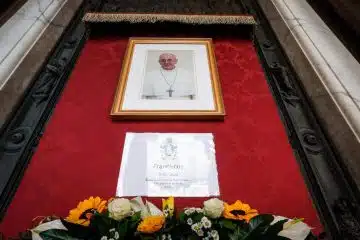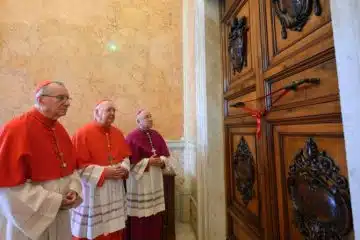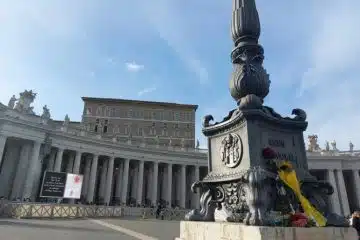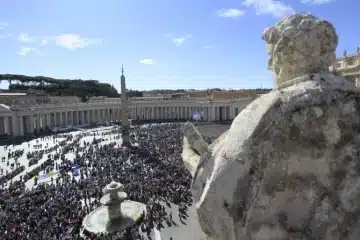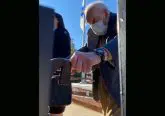Did St. Francis really tame a savage wolf? A look at the legend
CNA Staff, Oct 4, 2023 / 04:00 am
In the Italian town of Gubbio, some 130 miles north of Rome, sits the church of San Francisco della Pace — the Church of St. Francis “of the Peace.”
The church is large and old, and its white stone exterior is nondescript. Walking inside, you’ll find an inscription in the stone above the main entrance. It reads “dedicated to God and Francis, the peace bestower.”
Next to the inscription is a carved image of a wolf.
The Church is built on the spot where, according to legend, St. Francis of Assisi (d. 1226) made a peace pact with a wolf that had been terrorizing the town of Gubbio.
St. Francis of Assisi, whose feast day is Oct. 4, is remembered for many things: his voluntary poverty, his dynamic preaching, his founding of the worldwide Franciscan order, and his miraculous reception of Christ’s wounds — the stigmata — in his own flesh.
But perhaps most especially — at least in the popular imagination — he is known for his care for animals and God’s natural creation more generally.
Francis is so closely associated with animals, in fact, that even the Catechism of the Catholic Church offers him — by name — as an example of the gentleness with which Christians today should treat animals, alongside St. Philip Neri, the 16th-century Italian priest and mystic who doted on his numerous pet cats and dogs.
Anyway, the story of Francis and the wolf goes something like this.
Back in the early 13th century, a wolf began to stalk the countryside surrounding the town. He was hungry. He preyed on livestock. Soon, his hunger brought him closer and closer to town. He began to attack anyone who ventured outside the walls of Gubbio.
The ferocious wolf’s reign of terror gripped the townspeople with fear. Eventually, it got so bad that no one would even dare step outside the walls of the city.
A friar from the neighboring town of Assisi heard about the attacks. He traveled to Gubbio to meet with the wolf.
Legend has it, the wolf rushed at the friar, teeth bared, ready to attack. The friar made the Sign of the Cross, and suddenly the wolf slowed, and became docile. He laid his head in the friar’s hands.
The friar spoke to the wolf gently. He called him “Brother Wolf.” He scolded the wolf for terrorizing the town and for killing so many people. Then the friar offered a deal: If the wolf promised to never again attack any person or animal, the townspeople of Gubbio would feed him and make sure he never went hungry again.
And the wolf agreed. The friar, of course, was Francis.
Legend has it the wolf lived near Gubbio for another two years. He would peaceably go from door to door, and the townspeople would feed him. And when the wolf died of old age, the townspeople mourned him.
According to the church’s website, San Francisco della Pace was built on the spot where Francis tamed the wolf. In the church’s crypt is displayed a stone sarcophagus that, according to tradition, is from the tomb of the wolf.
Note: A version of this article first appeared on Catholic News Agency’s award-winning storytelling podcast, CNA Newsroom. You can listen to that episode here.



